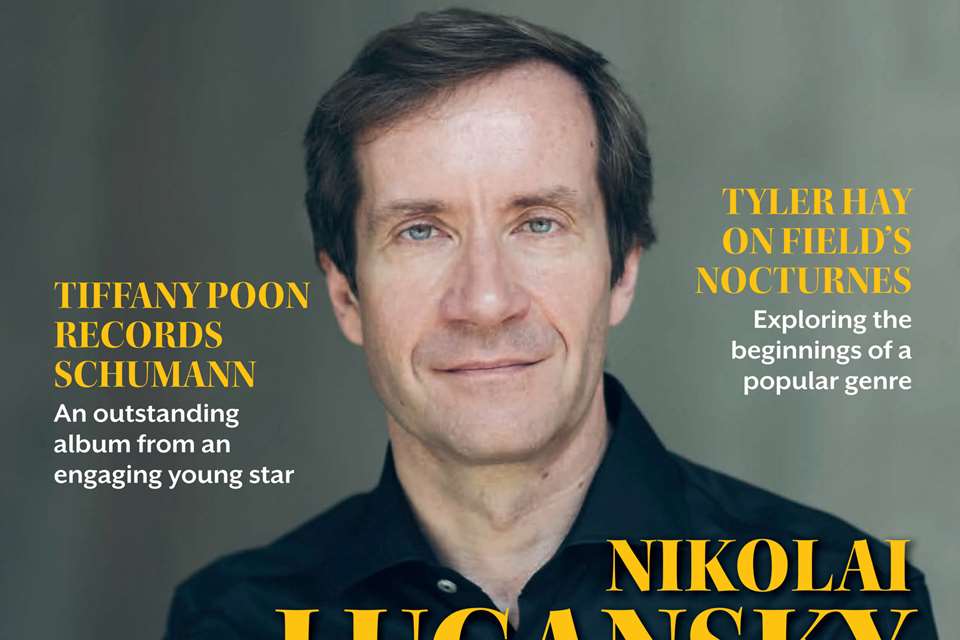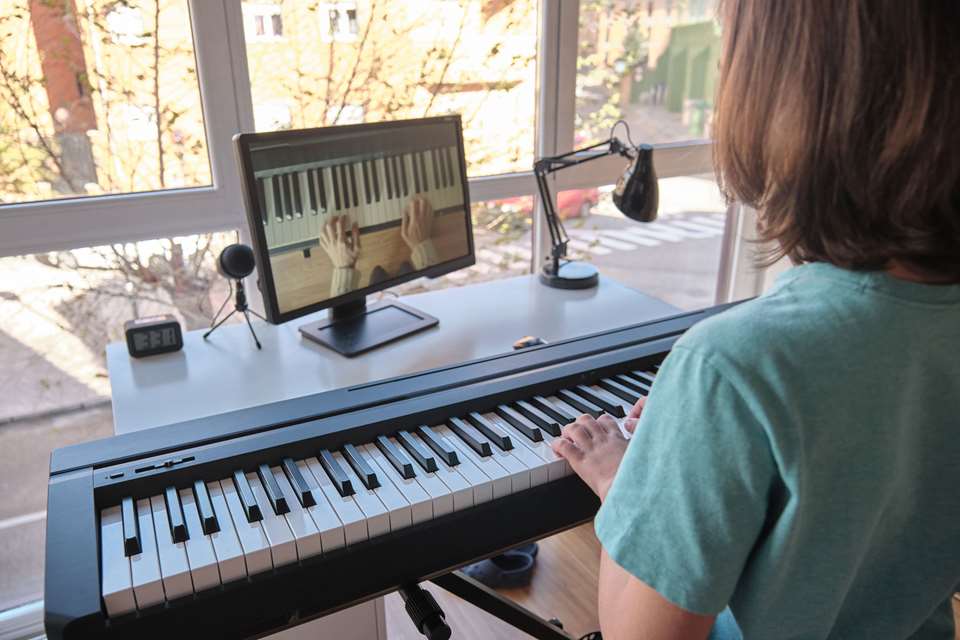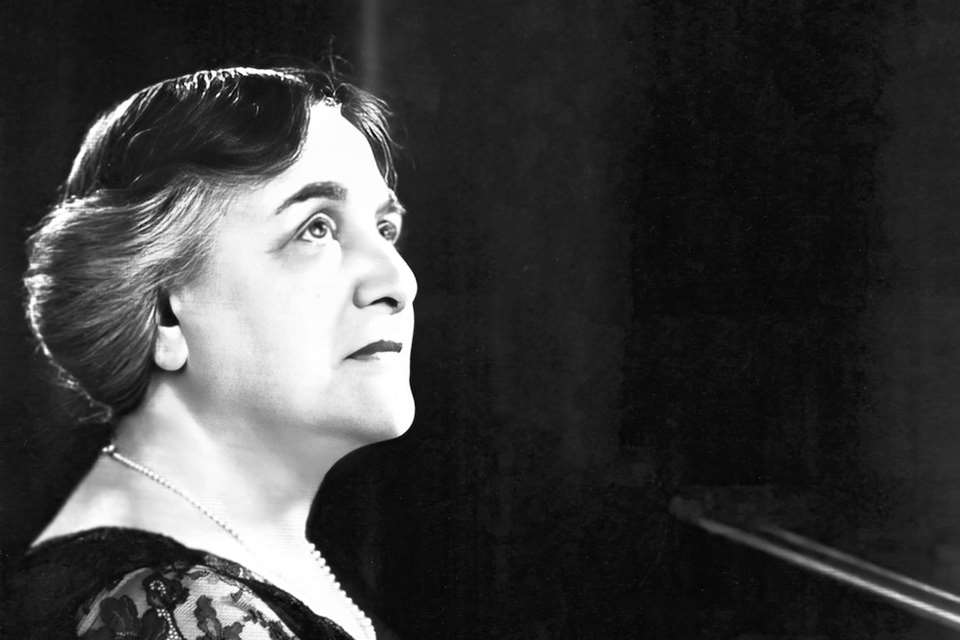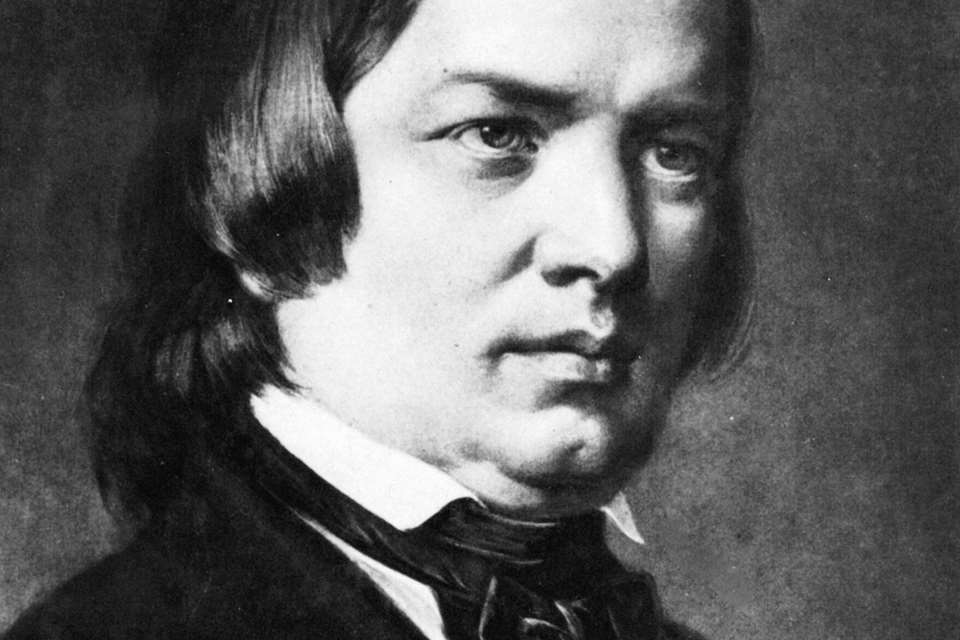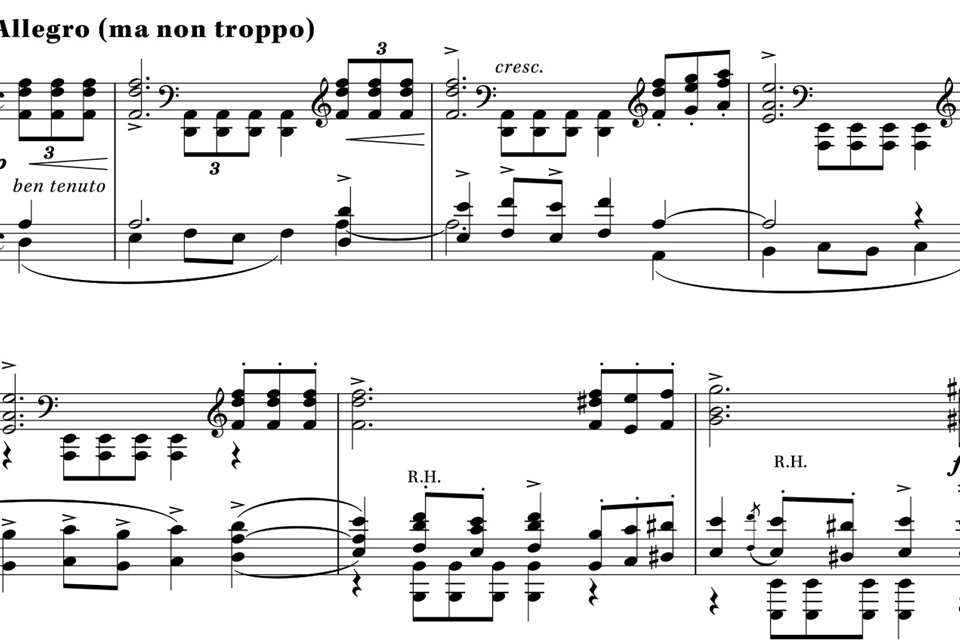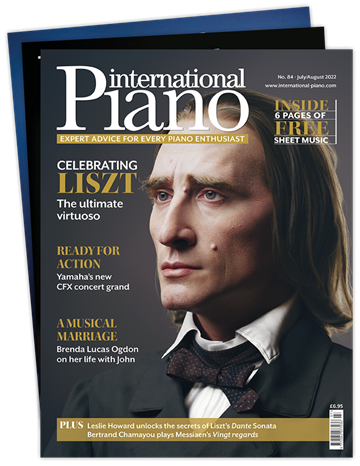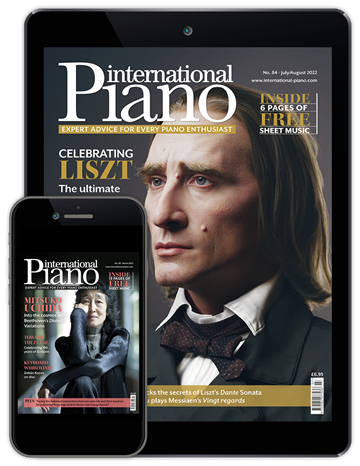Nikolai Lugansky: Mad for Wagner
Tim Parry
Friday, March 8, 2024
Having recorded an album of transcriptions from Wagner’s greatest operas, Nikolai Lugansky talks to Tim Parry about his relationship with music that gripped him as a teenager and won’t let go
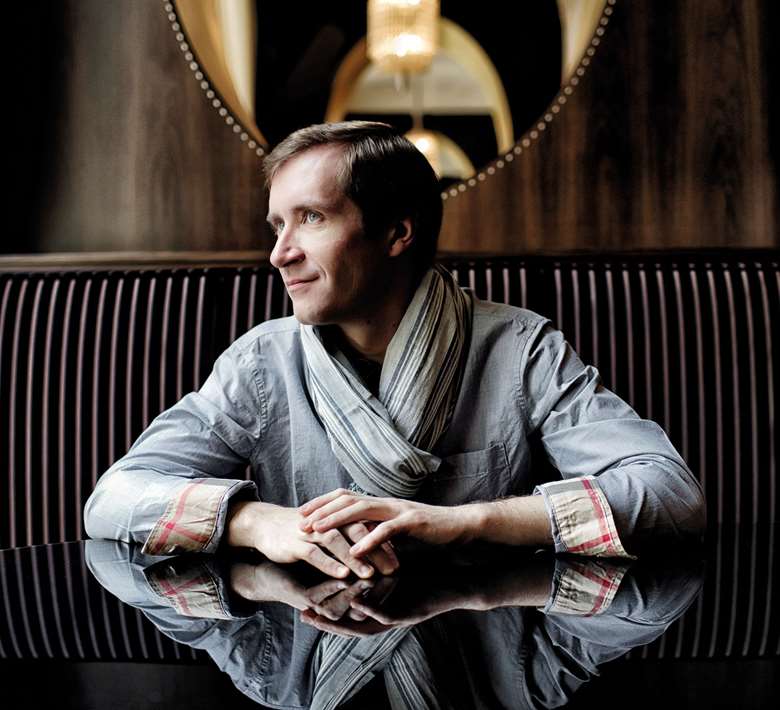
Nikolai Lugansky is renowned for his playing of Romantic music, and especially for his Rachmaninov. Last year, as part of the celebrations of the composer’s 150th anniversary, he played many of Rachmaninov’s greatest works in concert, and his last album, his second recording of the complete Études-tableaux, was enthusiastically welcomed both in these pages (his ‘engulfing command and his endless capacity to “voice” and colour are of a calibre known to few pianists,’ wrote Bryce Morrison) and as an Editor’s Choice in Gramophone. His latest recording for Harmonia Mundi is more unusual. Although albums of piano transcriptions of Wagner have been done before – by pianists from Glenn Gould to Llŷr Williams, both of whom included their own arrangements, in Gould’s case exclusively so – they are not common, and for Lugansky this recording presented a fresh set of challenges. As he explains, ‘whereas with my previous recordings, I knew exactly what I was going to play three or four months beforehand, with this album I decided on some of the details only during the recording, which makes it completely different’.
The genesis of the recording dates back more than 20 years. In 2001 Lugansky was invited to play at the ‘December Nights’ festival at the Pushkin State Museum of Fine Arts in his native Moscow. This annual festival was founded in 1981 by Sviatoslav Richter (after his death in 1997 it was renamed ‘December Nights of Sviatoslav Richter’), and the programme each year has a different theme – ‘Rembrandt and Beethoven’, ‘Russian Art and Music’, ‘English Music and Painters’, and so on. The theme for the 2001 festival was Richter’s favourite writer, Marcel Proust. In considering what to play, Lugansky recalled the importance to Proust of Wagner’s music. ‘In [Proust’s novel] À la recherche du temps perdu’, he explains, ‘there is a character, a musician, who says the only way of getting into aristocratic salons is to be able to play Wagner well on the piano. This sounds very strange. But how many opera theatres, even at the end of the 19th century, could put on Wagner operas? Not many. Most people who were in love with Wagner’s music played it or heard it on the piano.’ So Lugansky made his own arrangement of four extracts from Götterdämmerung, the final opera of Wagner’s Ring. He went on to play this at the La Roque d’Anthéron Festival in the summer of 2002, a performance that can be seen on YouTube. But he never wrote it down – ‘I was quite young and was very stupid not to create a score.’

Nikolai Lugansky highlights the differences between what you see on a score and what you play with your fingers (photo: Nikita Larionov)
Lugansky is talking to me on Zoom from his home in Moscow, using his phone so that for some of the time I can see only half of his face. As becomes apparent during our conversation, he doesn’t have a computer. But especially when talking about Wagner, his passion radiates through the screen despite the limitations of the technology.
‘When Harmonia Mundi asked me what I wanted to record next,’ he says, ‘I mentioned that I once played these Götterdämmerung pieces. They said, “wonderful, let’s do a Wagner album, it’s not so usual”. I agreed. But as we got closer to the recording sessions in Padua last September, I realised that I had to decide exactly what to record. I knew I would play these four scenes from Götterdämmerung, which I arranged over 20 years ago – I was 30 years old and I had the vocal score and the full score but nothing else. I also wanted to play one of the greatest Liszt transcriptions, Isoldens Liebestod, so altogether we had about 35 minutes of music. I didn’t decide what else to include until July or August. Of course, I looked at what existed, and there are a lot [of Wagner transcriptions]. There are transcriptions by [Hans von] Bülow, other Liszt arrangements, there are things by Zoltán Kocsis … we could spend many hours talking about who did what in terms of transcriptions.’
Indeed we could. Possibly as a result of not speaking in his own language, or perhaps as an inevitable consequence of juggling many competing thoughts, Lugansky doesn’t always articulate things in a straight line. His first mention of Louis Brassin, the Belgian pianist who wrote several pieces drawn from parts of the Ring cycle, immediately takes him on a tangent – ‘did you know he died in Russia, in St Petersburg?’. But he does explain how he put together the rest of the programme. ‘I finally settled on the greatest, the most gigantic work of Wagner, Der Ring des Nibelungen, so the album became a picture of the whole tetralogy, with the exception of Siegfried – although there is a lot of music in Siegfried that I adore. I looked at the score of two Louis Brassin transcriptions, including his arrangement of the Magic Fire Music that ends Die Walküre, which is played quite a lot. [This has been recorded by, among others, Cyprien Katsaris, Severin von Eckardstein and Risto-Matti Marin.] This is wonderful music, and everyone plays it quite differently. Then I thought it would be good to have something from the very first evening, from Das Rheingold, and settled on Brassin’s transcription of the Entry of the Gods into Valhalla – I started to look at this and it came as a surprise to me that Brassin didn’t use the ending of the opera, which I love. These wonderful modulations – typical of middle-period Wagner, not yet like the music in Tristan or Parsifal but no longer like the music of Tannhäuser or Der fliegende Holländer – were left out. So I decided I had to arrange the second part, which probably took me more time than Brassin spent on the original arrangement. I mostly used the orchestral score and of course I listened to many recordings of this very famous piece, which is found on many Wagner “orchestral highlights” albums.’
‘This is music that drives you mad. That’s not good and not bad, it’s just a fact’
Lugansky continues: ‘With Parsifal, I didn’t know exactly what I was going to play until I was actually in the studio. I love the Transformation Music from the First Act, but it is very difficult to play on the piano. There are one or two arrangements of this music that are not fantastic, and there are one or two versions of the ending of the whole opera. Finally I heard on the radio a version of the ending by Zoltán Kocsis, who was one of the greatest virtuosos of the 20th century, and this was quite impressive. I got the score of the Kocsis arrangement, and the final link between the Transformation Music from Act 1 and the Finale from Act 3 was done during the recording itself.’
Lugansky is keen to stress that, while everyone knows that Wagner had a huge ego, not many composers who had achieved so little by the age of 25 had such belief in their own importance, and ultimately Wagner was right. ‘If someone had come to me with music they’d written at the age of 25 and it was equivalent to what Wagner had written, I would say “congratulations, but I think you had better look for another job!”. I think this would not only be my reaction. Other composers at the time were sceptical about Wagner’s talent. Except perhaps Liszt: I cannot think of anyone who had done so much for another composer based on not very much.’ It is true that Liszt was an enthusiastic champion of many apparently lost causes: think of the ‘Berlioz Weeks’ that he staged in Weimar in 1852 and 1855, at a time when Berlioz’s music was entirely marginalised, even in France. As Lugansky points out, if you look at Wagner’s early music – his piano works, for example – there is no inkling at all of the great music that was to come. Wagner was the ultimate late developer, whose greatness was foreseen primarily by Wagner himself.
Of course, although the transcriptions by Liszt and Brassin are published, Lugansky’s own arrangements, including the four scenes from Götterdämmerung, are not. In fact, no score at all existed of Lugansky’s arrangements, which obviously needed to be rectified for a recording, not least to give the record producer something to work from. This wasn’t a straightforward task. This is music that was in Lugansky’s mind, his ears and his fingers, and which – as he acknowledges – he would have played slightly differently each time. He hadn’t performed this music for more than 20 years and hadn’t written any kind of score since he was a child. He needed not only to notate what he was playing, but to decide on a ‘final’ form for these arrangements, to be set down for posterity on record.
As we have seen, Lugansky doesn’t own a computer. Something of a technophobe, he needed assistance. ‘The last time I wrote a score myself, I was seven or eight years old,’ he tells me. ‘Many people compose music at this age and then they discover composers like Mozart, Schubert, Beethoven, Chopin – and they stop. I realised that to write the score … well, I knew it was not easy, but it is so difficult it’s almost impossible. But it was a very interesting experience. I was allowed a glimpse of a small part of the composer’s “kitchen”, of genius – not only Wagner’s. I saw with different eyes what Rachmaninov had achieved in his transcriptions. And Liszt, too, although they are more variable; with Rachmaninov there are 14 transcriptions and every one of them is a monument of pianistic art. I soon realised that this was impossible for me, it just wasn’t practical, and finally I found a young guy who knew notation software – this only happened last August.’
With a month to go before the recording sessions, Lugansky thankfully found help. ‘This young guy, a student … how he operated the computer and the Sibelius program was just unbelievable. For me anyway; maybe for people who are 20 years old it’s natural, but you also have to be a musician with a fantastic music education, and this guy helped me a lot. He prepared the score using the recording that is on YouTube, a live recording of my concert from La Roque d’Anthéron in 2002. Of course, I made a lot of changes. I also expanded it: it was 24 minutes, and now it is 27 or 28 minutes. For me to have made the score with a computer would have taken months. This guy was amazing.’
For Lugansky, the most valuable lesson from this process was the light it shone on the delicate relationship that exists between a score and a musical performance. ‘You prepare the score,’ he says. ‘Finally, after hours of work, it looks OK. Then you play it on the piano and it is a completely different world. One is a picture of the score; the other is what you do with your fingers, with your ears, with your heart, on the piano. On the piano you play differently. Then you try to put this in the score. But then the score looks horrible. I didn’t imagine that even to write down the harmonies would be that difficult. If you play for your friends, it’s fine; if you want something where the score looks OK, that’s also fine. But these are different things. Now I have more respect for everybody who writes a score, because I understand how difficult it is.’
I wonder how long it took for Lugansky to get his technically demanding Götterdämmerung arrangements back into his fingers. ‘I started to play it again in August, first of all without the score. It was not such a problem just to play the music, there was still some muscle memory, but I repeat there was this unbelievable contradiction between what is on the score and what you have to play with your fingers. These are absolutely different things.’ Has such a direct experience of the fact that a score can only partially encode what a musician does in performance altered the way Lugansky views other music, say a Rachmaninov Prelude? ‘Absolutely,’ he says. ‘Certainly a Rachmaninov Prelude, but even music by Mozart. It hasn’t completely changed the way I see a score and its relationship to a performance, but it has helped to give some new answers.’
Lugansky describes this album as not so much a celebration of the art of transcription as a reflection of his love of the greatest music of Wagner. ‘If you’re really in love with something you have to express it somehow,’ he says, and explains how this music got under his skin when he was a teenager. ‘One of the very first CDs I bought, when I started to travel abroad, in about 1989 or 1990, was an album of Wagner opera highlights from the Cleveland Orchestra and George Szell. Among many pieces were these same extracts from Götterdämmerung.’ The music made a deep and lasting impression: ‘this music drives you mad [that is, insane rather than angry], so you start to play it …’ – he searches for the right expression – ‘to be a little bit free.’ To get it out of your system; to escape its grip? ‘Yes, exactly. There are two types of great music: there is great music that gives you more peace, more freedom, more health, more normality – if you listen to Mozart, Bach or Schubert, you feel more healthy. But the great music of some composers just makes you go mad. I am not a person who easily goes mad, but this Transformation Music [from Parsifal] seems like religious music, but it’s not religious in the sense that it makes you more spiritually healthy. This is music that drives you mad. That’s not good and not bad, it’s just a fact. It can be like this with Mahler, with Shostakovich; but for me Wagner is the strongest example of losing any internal peace.’
Having not played these Götterdämmerung arrangements since 2002, will Lugansky perform them again in concert? ‘Yes – and I’m sure that I will look again at the score of Götterdämmerung and will think that I have to change many things, now probably for practical reasons. When you sit in a concert hall in front of an audience it’s a completely different situation from sitting in a room alone and coming up with a score.’ Or, indeed, from playing it in a recording studio.
Before we end our conversation, I return to our earlier discussion of the wealth of Wagner transcriptions to choose from. Does Lugansky know Moszkowski’s arrangement of Isoldens Liebestod, which is more florid and pianistically graceful than Liszt’s epic and suitably grandiose version? ‘Moritz Moszkowski? No, I’ve never heard this. I would be fascinated.’ He has the score now. Perhaps he can be persuaded to record a second volume.
This article originally appeared in the Spring 2024 issue of International Piano. Never miss an issue – subscribe today




